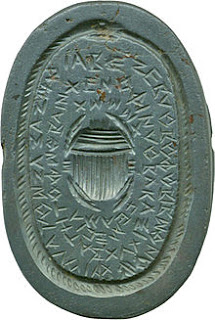This picture of a circuit with no source used as symbolism is being tweeted/retweeted lately taking some shots at "Keynesianism!" etc. : Keynesian economics — the dream. pic.twitter.com/fn7JMZ5ES8 — TakingHayekSeriously (@FriedrichHayek) October 28, 2017 This is nothing new from this cohort of mankind; this is an equivalent picture of the serpent eating its own tail from an ancient pagan sect which is the same type of agnostic/atheist thing that we get from these libertarians today: There was a whole system to it back then too. From the wiki for Greek ouroboros meaning ''tail devourer" [LOL!!!]: The first known appearance of the ouroboros motif is in the Enigmatic Book of the Netherworld, an ancient Egyptian funerary text in KV62, the tomb of Tutankhamun, in the 14th century BC. The
Topics:
Mike Norman considers the following as important:
This could be interesting, too:
Robert Vienneau writes Austrian Capital Theory And Triple-Switching In The Corn-Tractor Model
Mike Norman writes The Accursed Tariffs — NeilW
Mike Norman writes IRS has agreed to share migrants’ tax information with ICE
Mike Norman writes Trump’s “Liberation Day”: Another PR Gag, or Global Reorientation Turning Point? — Simplicius
This picture of a circuit with no source used as symbolism is being tweeted/retweeted lately taking some shots at "Keynesianism!" etc. :
Keynesian economics — the dream. pic.twitter.com/fn7JMZ5ES8— TakingHayekSeriously (@FriedrichHayek) October 28, 2017
This is nothing new from this cohort of mankind; this is an equivalent picture of the serpent eating its own tail from an ancient pagan sect which is the same type of agnostic/atheist thing that we get from these libertarians today:
There was a whole system to it back then too. From the wiki for Greek ouroboros meaning ''tail devourer" [LOL!!!]:
The first known appearance of the ouroboros motif is in the Enigmatic Book of the Netherworld, an ancient Egyptian funerary text in KV62, the tomb of Tutankhamun, in the 14th century BC. The text concerns the actions of the god Ra and his union with Osiris in the underworld. In an illustration from this text, two serpents, holding their tails in their mouths, coil around the head, neck, and feet of an enormous god, who may represent the unified Ra-Osiris. Both serpents are manifestations of the deity Mehen, who in other funerary texts protects Ra in his underworld journey.
The ouroboros appears elsewhere in Egyptian sources, where, like many Egyptian serpent deities, it represents the formless disorder that surrounds the orderly world and is involved in that world's periodic renewal.[7] The symbol persisted in Egypt into Roman times, when it frequently appeared on magical talismans, sometimes in combination with other magical emblems.
Same cohort of morons just using an electrical component today as a contemporary symbolism instead of a serpent used by these same zombie nut-jobs thousands of years ago.
SSDD.

